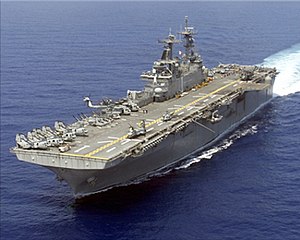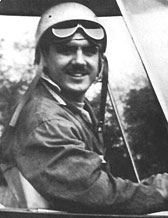Shipping is the greenest method of transport. In terms of carbon emissions per ton per mile, it emits about a thousandth of aviation and about a tenth of trucking. But it's not benign, because there's so much of it. So shipping emissions are about three to four percent, almost the same as aviation's.

Where a wing is concerned, you get lift by lowering the pressure above the wing so that the higher pressure below the wing lifts you up. So how do you lower the pressure? Typically, through forward velocity combined with the shape of the wing which makes the air up top move faster. Faster moving air up top equates to lower pressure.
Everyone knows that—don’t they? I truly wish I had paid more attention to science at school. Wordsmith or not, these days I find that not only I am knee deep in it, but I enjoy it. But back in the day, I preferred Latin. I was obsessed with the Ancient Romans. They really seemed to know how to run things.
The principles of flight all sound so simple you’d wonder why we didn’t discover flying much earlier. Then Columbus could have discovered America by air (which would have been rather appropriate). On the other hand, the prospect of Genghis Khan being air mobile would have been rather intimidating.
 A U.S. born inventor called Pat Peebles (mostly self-taught and a man with an extremely interesting background) has come up with the idea that if faster air via velocity is good—then even more and faster air (assisted by fans the length of each wing—very important) would be better.
A U.S. born inventor called Pat Peebles (mostly self-taught and a man with an extremely interesting background) has come up with the idea that if faster air via velocity is good—then even more and faster air (assisted by fans the length of each wing—very important) would be better.
It sounds and looks crazy—and you would have to wonder about drag (air resistance)—but the upside “is to provide short-field performance close to that of a helicopter or tilt-rotor with operating costs approaching those of a conventional aircraft.”
In other words, Peebles isn’t after a high top speed (so isn’t overly concerned with drag). He is after massive lift without the cost overhead of a long runway, or the expense and complexity of rotary aircraft (which, so far, aren’t very good at heavy lift anyway). He wants to be able to lift a standard 20 foot container (inexpensively by conventional aviation standards). His goals could end up being even more ambitious. Flight tests indicate that performance improves as the aircraft is scaled up. They also show that the FanWing is particularly stable in the air.
He may not be so crazy after all. ISO Standard containers have to be the most cost efficient way to go where a normal payload is concerned. The fact that aircraft use non-standard containers is a major cost problem because, all too often, goods have to be unloaded and re-loaded twice more than necessary.
Heavy lift at modest speeds and at low stall speed—and at low noise—without the need for a full runway (something like 100 meters looks like being sufficient) actually has endless application for everything from short haul passenger work to border patrolling—or any kind of transport application where there aren’t roads. In fact it could also lead to the centralized construction of some housing, or housing elements. The current heavy lift situation is that:
- Traditional aircraft need huge runways—major up-front investments, particularly where the land is concerned. They also do not excel at heavy lift. You need ever more powerful engines and longer, and longer runways.
- Helicopters are even worse at heavy lift—and are extremely expensive to buy, operate, and maintain. And are noisy.
- Airships show promise, but are bulky and not quite proven in the role yet.
Interestingly, the length of the runway the FanWing seem likely to require will be roughly the length of a freight carrying airship—perhaps 300-450 feet. By the way, a Nimitz class aircraft carrier is 1,092 feet long—so a Fanwing could take off from an aircraft carrier with ease without even needing a catapult. It could also take off from the deck of an amphibious assault ship without assistance. The deck of a Wasp class is 831 feet long.

FanWings could revolutionize aerial re-supply—and could fly autonomously into the bargain..
The FanWing—especially given its lift capability—will be able to fly long distances as well, but here its disadvantage for much work will be its low speed.
PHOTO IS OF USS WASP – LANDING HELICOPTER DOCK (LHD)
AMPHIBIOUS ASSAULT SHIP
Here is an extract from an Aviation Week article.
Peebles has been developing his idea the way most lone inventors do, by flying small radio-controlled models of increasing scale and complexity. The next step, if funding can be found, was to be a two-seat ultralight demonstrator. Then along came DLR and the EU-funded SOAR (distributed open-rotor aircraft) project to optimize the rotor and wing and explore the feasibility of a FanWing cargo aircraft (see concept).
The SOAR project is aimed at a perceived gap in the global logistics infrastructure—an aircraft able to carry the ISO-standard intermodal shipping containers now moved by ship, rail and road, but not by air because of their size and weight. Today containerized loads are broken up for air transport either as bulk cargo or in lightweight airfreight containers that are not compatible with the other modes.
Proponents of the “container-plane” concept argue that the ability to transport the 20-ft.-long ISO containers by air would be valuable in underdeveloped countries lacking road and rail infrastructure, while enabling “door-to-door” deliveries in developed nations and providing flexibility for military cargo operations. The attraction of the FanWing is its potential for cost-effective ultra-short-takeoff-and-landing operations.
SOAR has begun with wind-tunnel tests at VKI in Belgium to optimize the cross-flow fan and wing shape. The 1.5-meter (5-ft.)-span wing section, with 50-cm-dia. rotor, will allow researchers to test different blade airfoils and angles of attack, rotor angles and speeds, entrance and exit heights, and trailing-edge angles, says Peebles. Tests will include flow visualization, particularly of the trapped vortex that creates a low-pressure region within the rotor and contributes a large part of the lift.
DLR’s feasibility study will define takeoff and landing distances, speeds, fuel consumption and through-life costs for a 10-ton-payload cargo FanWing. Peebles and SOAR project consultant George Seyfang estimate the aircraft will have a takeoff run of 300 ft. and cruise at 150 kt. at 18,000 ft.
Aviation is a classic example of an area where good intentions—the FAA regulations which govern all aspects of civil aviation for instance—inhibit innovation and experimentation. Given the impressive safety of civil aviation, it is hard to argue with the FAA’s track record, but a strong case can be made that the certification process for non-passenger aircraft should be less onerous. We need a regulatory framework but it needs to be tweaked creatively.
 The current system makes it extraordinarily difficult and expensive for small companies to break into the aviation marketplace—no matter how innovative their thinking. A consequence is that major corporations like Boeing and Lockheed Martin have a semi monopoly of aviation innovation (and associated development grants)—which not a good thing. True, they do innovate up to a point—normally only when government funding is available—but the daring, vision, and passion that has long characterized the cutting-edge innovators like Frank Piasecki (see photo) one of the great developers of rotary aircraft (who had the guts to act as his own test pilot on many occasions) is missing.
The current system makes it extraordinarily difficult and expensive for small companies to break into the aviation marketplace—no matter how innovative their thinking. A consequence is that major corporations like Boeing and Lockheed Martin have a semi monopoly of aviation innovation (and associated development grants)—which not a good thing. True, they do innovate up to a point—normally only when government funding is available—but the daring, vision, and passion that has long characterized the cutting-edge innovators like Frank Piasecki (see photo) one of the great developers of rotary aircraft (who had the guts to act as his own test pilot on many occasions) is missing.
Corporations tend to be overly concerned with quarterly results and the share price—which rarely does much for the long game. Inventors are risk takers, impassioned, a little crazy, and are driven by the idea.
They sound remarkably like writers.

FRANK PIASECKI—DRIVEN BY THE IDEA
The U.S. has a long tradition of pioneering, where aviation is concerned, but—as matters stand—our lead is being eroded due to excessive FAA zeal.
There is a need for a better balance here. Passenger aircraft and airlines clearly do need to be tightly regulated—airlines have demonstrated a willingness to make shortcuts where safety is concerned if they can get away with it—but the processes for other sectors could be simplified and speeded up.
It is worth noting that Peebles is American—and under the right circumstances the aircraft might well be developed here.
No comments:
Post a Comment